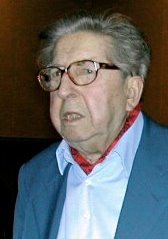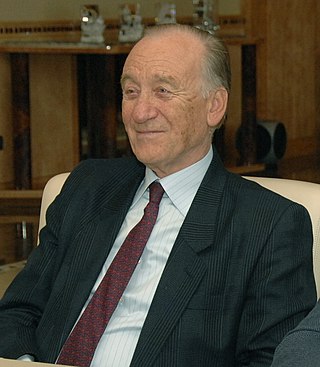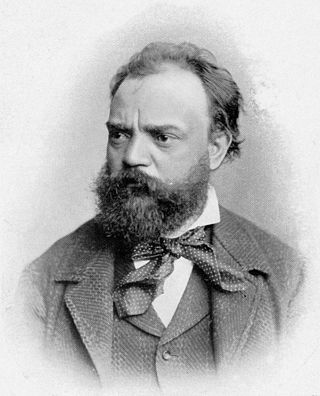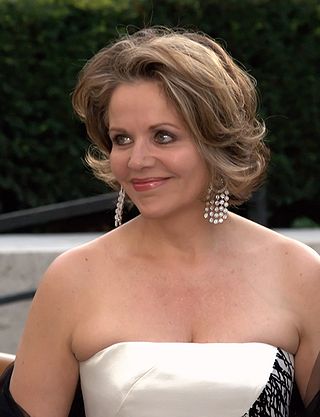Related Research Articles

Isaac Stern was an American violinist.

The Violin Concerto in D major, Op. 61, was written by Ludwig van Beethoven in 1806. Its first performance by Franz Clement was unsuccessful and for some decades the work languished in obscurity, until revived in 1844 by the then 12-year-old violinist Joseph Joachim with the orchestra of the London Philharmonic Society conducted by Felix Mendelssohn. Joachim would later claim it to be the "greatest" German violin concerto. Since then it has become one of the best-known and regularly performed violin concertos.

The Violin Concerto in D major, Op. 77, was composed by Johannes Brahms in 1878 and dedicated to his friend, the violinist Joseph Joachim. It is Brahms's only violin concerto, and, according to Joachim, one of the four great German violin concerti:
The Germans have four violin concertos. The greatest, most uncompromising is Beethoven's. The one by Brahms vies with it in seriousness. The richest, the most seductive, was written by Max Bruch. But the most inward, the heart's jewel, is Mendelssohn's.

Henri Paul Julien Dutilleux was a French composer of late 20th-century classical music. Among the leading French composers of his time, his work was rooted in the Impressionistic style of Debussy and Ravel, but in an idiosyncratic, individual style. Among his best known works are his early Flute Sonatine and Piano Sonata; concertos for cello, Tout un monde lointain... and violin, L'arbre des songes ; a string quartet known as Ainsi la nuit ; and two symphonies: No. 1 (1951) and No. 2 Le Double (1959).

Rodion Konstantinovich Shchedrin is a Soviet and Russian composer and pianist, winner of USSR State Prize (1972), the Lenin Prize (1984), and the State Prize of the Russian Federation (1992), and is a former member of the Inter-regional Deputies Group (1989–1991). He is also a citizen of Lithuania and Spain.

Truls Olaf Otterbech Mørk is a Norwegian cellist.

The Violin Concerto No. 3 in B minor, Op. 61, by Camille Saint-Saëns is a piece for violin and orchestra written in March 1880. Saint-Saëns dedicated the concerto to fellow composer-virtuoso Pablo de Sarasate, who performed the solo part at the premiere in October 1880 in Hamburg.

The Violin Concerto in A minor, Op. 53, is a concerto for violin and orchestra composed by Antonín Dvořák in 1879. It was premiered in Prague on October 14, 1883. by František Ondříček, who also gave the Vienna and London premieres. Today it remains an important work in the violin repertoire.
Hans Graf is an Austrian conductor.

Igor Stravinsky's Violin Concerto in D is a neoclassical violin concerto in four movements, composed in the summer of 1931 and premiered on October 23, 1931. It lasts approximately twenty minutes.
The Grand Prix du Disque for Instrumental and Symphonic Music is awarded by the Académie Charles Cros, L'Abbaye, 02570 Chézy sur Marne, France. Categories vary from year to year, and multiple awards may be given in the same year in the same exact category. Instrumental and Symphonic music may include solo & orchestra (concerto) or pure symphonic music. Other subcategories have included classical symphonic music, contemporary symphonic music and modern concerto.

Augustin Hadelich is an Italian-German-American Grammy-winning classical violinist.

Sinfonia (Symphony) is a composition by the Italian composer Luciano Berio which was commissioned by the New York Philharmonic for its 125th anniversary. Composed in 1968–69 for orchestra and eight amplified voices, it incorporates musical quotations to represent an abstract and distorted history of culture. The eight voices are not incorporated classically but rather speak, whisper and shout excerpts from texts including Claude Lévi-Strauss' The Raw and the Cooked, Samuel Beckett's novel The Unnamable, instructions from the scores of Gustav Mahler and other writings.

Le temps l'horloge is a song cycle for soprano and orchestra, by the French composer Henri Dutilleux.

Thierry Joseph-Louis Escaich is a French organist and composer.

Renaud Capuçon is a French classical violinist. Since late 2016 he has been teaching at the Royal Northern College of Music.

Tout un monde lointain... is a concertante work for cello and orchestra composed by Henri Dutilleux between 1967 and 1970 for Mstislav Rostropovich. It is considered one of the most important 20th-century additions to the cello repertoire and several major cellists have recorded it. Despite the fact that the score does not state that it is a cello concerto, Tout un monde lointain... has always been considered as such.
Luc Héry is a French classical violinist.

Guy Dangain is a French classical clarinetist.
References
- 1 2 Robert Adelson. L'Arbre des songes, concerto for violin & orchestra at AllMusic
- ↑ Henri Dutilleux, L'Arbre des songes, Schott (Paris, 1985)
- 1 2 3 "L'Arbre des songes" (work details) (in French and English). IRCAM.
- ↑ "58th Annual GRAMMY Awards Winners & Nominees". grammy.com. The Recording Academy. 2016. Retrieved 25 February 2016.